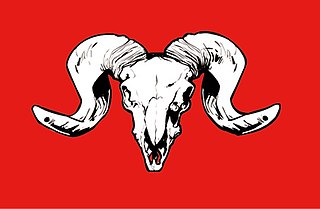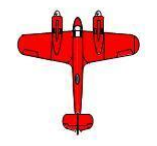
The 24th Infantry Brigade was an infantry brigade of the British Army from the First World War. It was reraised during the Second World War, as the 24th Infantry Brigade (Guards). During various designations, the brigade was active throughout the Cold War and existed until 1999, when it was merged with the 5 Airborne Brigade to become 16 Air Assault Brigade.

The 11th Security Force Assistance Brigade is a brigade of the British Army which is intended to train and assist foreign forces. In 2021, under the Future Army changes, the brigade was redesignated, formerly being the 11th Infantry Brigade & HQ South East. Prior to the Army 2020 changes in 2013, the brigade was temporarily activated for deployment to Afghanistan. Originally formed in the Second Boer War, the brigade was engaged during both World Wars.

Carver Barracks is a British Army base on the former site of RAF Debden, approximately 1 mile north of the village of Debden, in Essex. The nearest town is Saffron Walden. It is occupied by explosive ordnance disposal & search regiments of the Royal Engineers.

Bulford Camp is a military camp on Salisbury Plain in Wiltshire, England. Established in 1897, the site continues in use as a large British Army base. The camp is close to the village of Bulford and is about 2+1⁄4 miles (3.6 km) north-east of the town of Amesbury. The camp forms part of the Tidworth, Netheravon and Bulford (TidNBul) Garrison.

Force Troops Command was a combat support and combat service support command of the British Army. Its headquarters was at Upavon, Wiltshire. It was formed in 2013 as a re-designation of the previous Headquarters Theatre Troops. Force Troops Command was renamed as 6th Division in August 2019.

101 Engineer Regiment is a regiment of the British Army's Royal Engineers. Under Army 2020 Refine, the regiment moved from a hybrid regiment to a reserve EOD&S regiment with the regimental headquarters established in Catford. It is part of 29th Group, 8 Engineer Brigade. The Honorary Colonel of the regiment is Col Jools Holland.

3 RegimentArmy Air Corps is a regiment of the British Army and is under the command of the 1st Aviation Brigade Combat Team within Joint Aviation Command (JAC). The regiment operates the AH-64E Apache attack helicopter, and is based out of Wattisham Flying Station.
26 Engineer Regiment is a regiment of the British Army's Royal Engineers. It is based at Swinton Barracks, Salisbury Plain, Wiltshire.
32 Engineer Regiment is a regiment of the British Army's Royal Engineers.
33 Engineer Regiment (EOD&S) is a regiment of the British Army's Royal Engineers. It is based at Carver Barracks, Essex.

The 36 Engineer Regiment is a regiment of the Corps of Royal Engineers within the British Army. The regiment trace their history back to before World War II as 36 Army Engineer Regiment. The regiment today is a general support engineer regiment provided force support within 12 Engineer Group.

The 1st Artillery Brigade was a support formation of the British Army from 1961-77 and from 1997. Part of the 3rd Division, it oversaw all army close support artillery and deep fires units. Under the Future Soldier programme, the brigade merged with 1st Armoured Infantry Brigade to form 1st Deep Reconnaissance Strike Brigade Combat Team.

8th Engineer Brigade is an engineering support formation of the British Army, which forms part of 1st Division.

The page contains the current structure of the British Army. The British Army is currently being reorganised to the Future Soldier structure.
This is a list of units of the British Army's Royal Engineers.
The following is a hierarchical outline for the structure of the British Army in 1989. The most authoritative source for this type of information available is Ministry of Defence, Master Order of Battle, and United Kingdom Land Forces, HQ UKLF, UKLF ORBAT Review Action Plan, HQ UKLF, 1990.

The 29 Group, formerly 29 Engineer Brigade, is an engineer formation of the British Army responsible for Explosive Ordnance Disposal and Search. Its headquarters were at Aldershot, now at Didcot.

21 Signal Regiment is a signal regiment of the Royal Corps of Signals within the British Army. The regiment was, until the initial Army 2020 reforms, the only signal regiment to support the Royal Air Force.

The GurkhaAllied Rapid Reaction Corps Support Battalion, or simply the GurkhaARRC Support Battalion is a combat support unit of the British Army, and one of only three units permanently assigned to NATO. For administrative purposes, the Gurkha ARRC Support Battalion falls under the oversight of the Royal Logistic Corps, though employs members from many other cap badges.
The 2nd Division Transport Regiment was a military support unit of the British Army, forming part of the Royal Corps of Transport. Initially formed in 1953, the regiment would serve the 2nd Infantry Division until its first disbandment in 1984 following a reorganisation of the British Army of the Rhine. Reformed one year later, it would finally be disbanded in 1993 following the End of the Cold War.














